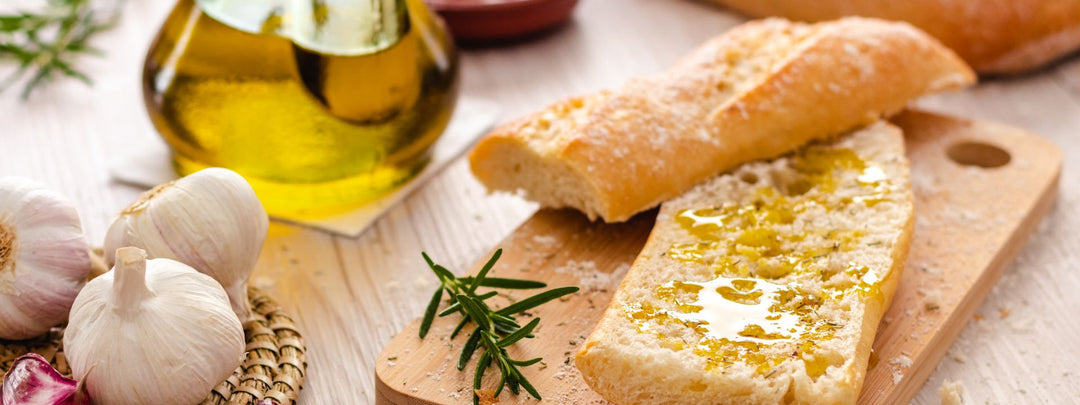
The Art of Pairing: Discovering Perfect Matches for Olive Oil in Every Dish
Posted on
Pairing olive oil with dishes is not merely a culinary task; it's an art form. The right olive oil can elevate the flavors of a dish, transforming a simple meal into a gastronomic delight. But what makes olive oil pairing an art? Let's explore.
Understanding Olive Oil Varieties

- Extra Virgin Olive Oil: Renowned for its superior quality and fruity flavor profile, extra virgin olive oil is extracted from the first cold pressing of olives.
- Virgin Olive Oil: Slightly lower in quality compared to extra virgin, virgin olive oil boasts a distinct flavor and aroma.
- Light Olive Oil: With a milder taste and higher smoke point, light olive oil is ideal for cooking and baking.
- Pure Olive Oil: Blended from refined and virgin olive oils, pure olive oil has a more neutral flavor, making it versatile for various cooking methods.
Factors to Consider When Pairing Olive Oil
- Flavor Profile: Consider the taste notes of the olive oil, ranging from fruity and grassy to peppery and robust.
- Intensity: Match the intensity of the olive oil with the flavors of the dish, ensuring it complements rather than overwhelms.
- Origin: Explore olive oils from different regions, each offering unique terroir and flavor characteristics.
Perfect Olive Oil Pairings for Different Dishes
- Salads: drizzle extra virgin olive oil over fresh greens for a vibrant and flavorful salad.
- Pasta: toss al dente pasta with extra virgin olive oil, garlic, and herbs for a simple yet satisfying dish.
- Grilled Vegetables: Brush vegetables with extra virgin olive oil before grilling to enhance their natural sweetness.
- Bread Dipping: Serve crusty bread with a dipping bowl of extra virgin olive oil seasoned with balsamic vinegar and herbs.
- Seafood: Finish grilled or baked seafood with a drizzle of lemon-infused extra virgin olive oil for a burst of freshness.
- Desserts: Experiment with olive oil cakes and desserts, where the fruity notes of extra virgin olive oil add depth to sweet treats.
Tips for Enhancing Olive Oil Pairings
- Experiment with different varieties to discover your preferred flavor profiles.
- Consider the cooking method when selecting olive oil, opting for extra virgin for raw applications and light olive oil for high-heat cooking.
- Use high-quality olive oil to ensure optimal flavor and health benefits.
FAQs about Olive Oil Pairing
What is the best olive oil for salad dressing?
- For salad dressing, it's best to use extra virgin olive oil due to its robust flavor and fruity notes. Its high-quality and unrefined nature make it ideal for enhancing the taste of fresh salads.
Can I use olive oil for baking?
- Yes, olive oil can be used for baking. However, it's important to choose the right type depending on the recipe. Extra virgin olive oil works well in recipes where its fruity flavor can complement the other ingredients. Light olive oil is also suitable for baking, especially for recipes that require a neutral-tasting oil.
How do I store olive oil properly?
- Olive oil should be stored in a cool, dark place away from direct sunlight and heat sources. Exposure to light and heat can cause the oil to degrade and lose its flavor. It's best to store olive oil in a tightly sealed container to prevent oxidation. Additionally, using a dark glass bottle or stainless steel container can help protect the oil from light exposure.
Does olive oil pair well with chocolate?
- Yes, olive oil can pair surprisingly well with chocolate. The rich, fruity flavors of extra virgin olive oil can complement the sweetness of chocolate, adding depth and complexity to desserts. Try drizzling a high-quality extra virgin olive oil over chocolate desserts or using it to make olive oil chocolate truffles for a unique flavor combination.
Is it safe to use olive oil for frying?
- Yes, olive oil is safe for frying when used correctly. Extra virgin olive oil has a lower smoke point compared to other cooking oils, so it's best suited for low to medium-heat frying. Light olive oil, with its higher smoke point, is a better option for high-heat frying. When frying with olive oil, it's important to monitor the temperature closely and avoid overheating to prevent the oil from smoking or burning.
Can I mix different olive oil varieties?
- Yes, you can mix different olive oil varieties to create unique flavor profiles. Experimenting with different combinations can enhance the complexity of dishes and add depth to your cooking. Just be sure to balance the flavors and intensities of the oils to achieve the desired taste. Mixing extra virgin olive oil with a lighter variety can create a well-rounded flavor that works well in various recipes.
Conclusion
Pairing olive oil with dishes is a nuanced art that requires consideration of flavor, intensity, and origin. By exploring different varieties and experimenting with pairings, you can unlock a world of culinary possibilities and elevate your dining experience.

Leave a comment: